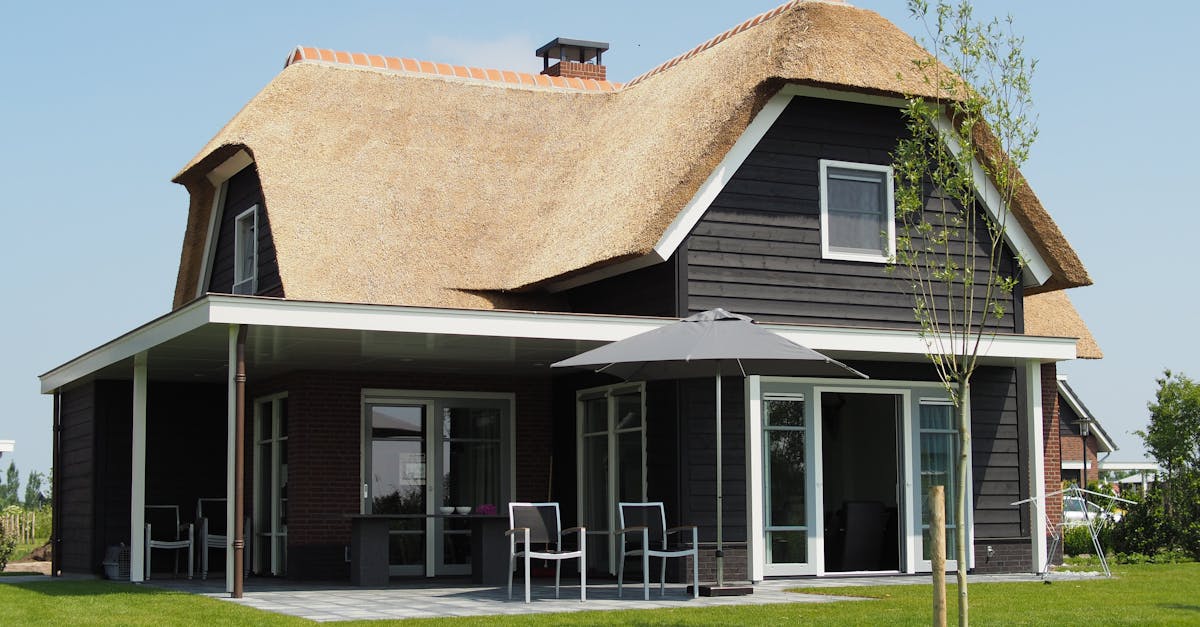
Energy Consumption in Heating and Cooling
Energy consumption in heating and cooling is a significant environmental concern within the realm of real estate. The extensive use of heating and cooling systems in buildings contributes greatly to energy consumption levels, thereby increasing carbon footprints. The demand for energy to regulate indoor temperatures not only leads to increased utility costs for property owners but also significantly adds to greenhouse gas emissions, exacerbating climate change issues.
Texas Assisting with real estate environmental issues is focused on promoting energy-efficient practices within the real estate sector to address the high energy consumption levels associated with heating and cooling systems. By encouraging the implementation of energy-efficient technologies and designs in new construction projects and promoting energy-saving initiatives in existing structures, real estate professionals can help reduce the environmental impact of the sector. Efforts to improve building insulation, promote the use of smart climate control systems, and enhance energy management practices are crucial steps towards mitigating the environmental hazards of energy consumption in heating and cooling within the real estate industry.
Increased Greenhouse Gas Emissions
Greenhouse gas emissions resulting from real estate activities have become a significant concern in recent years. As buildings are constructed, renovated, and demolished, they contribute to the release of greenhouse gases into the atmosphere. The production of building materials, transportation of materials to the construction site, and energy consumption during the operation of real estate properties all play a role in the generation of these harmful emissions. Texas is taking proactive measures by implementing regulations and incentives to mitigate the environmental impact of real estate activities.
Moreover, the reliance on traditional heating, cooling, and lighting systems in real estate properties further exacerbates the emission of greenhouse gases. As buildings consume energy for heating and cooling, predominantly from fossil fuel sources, they contribute to the acceleration of climate change. Texas Assisting with real estate environmental issues by promoting the adoption of energy-efficient technologies and renewable energy sources to reduce greenhouse gas emissions associated with real estate operations.
Waste Generation from Demolition and Renovation
Waste generation from demolition and renovation is a significant environmental hazard associated with real estate development. Throughout the process of tearing down existing structures and rebuilding, there is a considerable amount of waste produced, ranging from concrete and wood to plastics and metals. In Austin, Texas, assisting with real estate environmental issues requires a keen focus on managing this waste effectively to minimize its impact on the environment.
Improper disposal of construction and demolition waste can lead to landfill overflow, where these materials may release harmful chemicals and toxins into the soil and water sources. The sheer volume of waste generated from real estate activities exacerbates the issue, posing a threat to the surrounding ecosystems and the health of residents. Initiatives that prioritize recycling, reusing, and responsibly disposing of construction waste are essential in mitigating the environmental consequences of demolition and renovation projects in Austin, Texas.
Improper Disposal leading to Landfill Overflow
Improper disposal of waste from real estate activities poses a significant threat to our environment, particularly leading to landfill overflow. In urban areas such as Austin, Texas, the extensive construction and renovation projects contribute to vast amounts of debris and waste that needs to be properly managed. However, in many cases, the waste from these projects ends up in landfills, overwhelming these sites and exacerbating environmental issues.
Austin, Texas, known for its vibrant real estate market, is also grappling with the consequences of improper waste disposal in the industry. The sheer volume of materials such as concrete, wood, and insulation that are discarded haphazardly not only takes up valuable space in landfills but also contributes to soil and water contamination. Addressing these disposal practices is crucial in mitigating the negative impact of real estate activities on the environment. Assisting with real estate environmental issues in Austin, Texas involves implementing strict waste management policies to prevent landfill overflow and promote sustainable practices within the industry.
Impact on Wildlife Migration Patterns
Impact on wildlife migration patterns can be a significant consequence of real estate development. As urban areas expand into natural habitats, wildlife corridors and routes are disrupted, altering migration patterns. The destruction of these pathways can lead to fragmentation of populations, loss of genetic diversity, and even endangerment of certain species. Texas Assisting with real estate environmental issues is crucial to mitigate these impacts and promote sustainable development practices that prioritize the conservation of wildlife habitats and migration routes.
Furthermore, the creation of barriers due to infrastructure development can hinder the movement of wildlife populations, forcing animals to take longer routes or be confined to smaller areas. This can result in increased competition for resources, higher risks of predation, and overall decreased survival rates for various species. By implementing strategies that consider the needs of native wildlife, such as wildlife overpasses, underpasses, and protected green spaces, Texas plays a vital role in fostering coexistence between urban development and natural ecosystems, ultimately preserving the intricate web of biodiversity for future generations.
Barrier Creation due to Infrastructure Development
Infrastructure development in the real estate sector often leads to the creation of barriers that impact wildlife migration patterns. Rapid urbanization and the construction of roads, highways, and buildings can disrupt natural habitats, leading to fragmentation of ecosystems. In turn, this can hinder the movement of wildlife species, affecting their ability to access food, water sources, and breeding grounds.
Austin, Texas Assisting with real estate environmental issues, the development of infrastructure such as highways and railways can isolate different populations of animals, making it difficult for them to interact and maintain genetic diversity. Additionally, barriers created by infrastructure projects can alter natural migration patterns, forcing animals to adapt to new routes or preventing them from reaching crucial areas for survival. It is essential for real estate developers and policymakers to consider the environmental impact of infrastructure projects and implement measures to mitigate the negative consequences on wildlife.
FAQS
How does real estate contribute to energy consumption in heating and cooling?
Real estate properties require significant energy for heating and cooling, leading to increased energy consumption and carbon emissions.
What are the implications of increased greenhouse gas emissions from the real estate sector?
The real estate sector contributes to increased greenhouse gas emissions, which can result in climate change and global warming.
How does waste generation from demolition and renovation projects impact the environment?
Waste generated from demolition and renovation projects in the real estate sector can lead to pollution, resource depletion, and landfill overflow.
Why is improper disposal in the real estate industry a concern for environmental experts?
Improper disposal practices in the real estate industry can result in harmful chemicals leaching into the environment, contaminating soil and water sources.
How does real estate development affect wildlife migration patterns?
Real estate development can disrupt wildlife migration patterns, leading to habitat loss, fragmentation, and barriers that hinder the movement of species.




